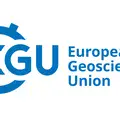
- 26 November 2025
The full results of the Union’s autumn 2025 election are now available.
European Geosciences Union
www.egu.eu
The full results of the Union’s autumn 2025 election are now available.

The European Geosciences Union is honouring 52 people at all stages of their careers who have made substantial contributions to the Earth, planetary, and space sciences.

The European Geosciences Union (EGU) is excited to announce this year’s Science Journalism Fellowship awardees: Tim Hornyak, Marta Abbà, and Alejandro Munoz

Following a vote by EGU’s volunteer Council, the EGU has adopted a new comprehensive emergency support policy that will provide greater access to all EGU's scientific tools, resources and opportunities to any researcher in the Earth, planetary and spaces sciences, anywhere in the world, who is impacted by disaster, crisis or conflict.

Applications are now open for experienced attendees to apply to be a part of the EGU26 Peer Support programme. The Peer Support programme, formerly called the mentoring scheme, helps experienced attendees of the General Assembly to facilitate novice attendees in getting the most out of their experience during the week of the meeting. Submit your application by 31 March 2026.

This blog post is part of our series: “Highlights” for which we’re accepting contributions! Please contact Emma Lodes (GM blog editor, elodes@asu.edu), if you’d like to contribute on this topic or others. Interview with Angus Moore, Researcher at the Czech Academy of Sciences, Prague, Czechia. Email: angus.moore@uclouvain.be Questions by Emma Lodes. Can you briefly describe the main objective of your research on Puerto Rico? The main objective of our research on Puerto Rico was to understand the factors controlling chemical …

The European Geosciences Union hosts a busy digital programme throughout the year, from seminar-style Campfire events with online networking to free, half-day workshops funded by EGU and organised by our volunteer Committees. Sitting between the two are our webinars: free, community-driven events which are presented live with the recording published later on the EGU Youtube channel. Webinars are a key pillar in our online resources, providing free access to a variety of topics including: Equality, diversity and inclusion, Jobs and …

Each month we feature specific Divisions of EGU and during the monthly GeoRoundup we put the journals that publish science from those Divisions at the top of the Highlights section. During this month, we are featuring Atmospheric Sciences (AS), Geosciences Instrumentation and Data Systems (GI), and Tectonics and Structural Geology (TS). They are represented by the journals Geoscientific Model Development (GMD), Annales Geophysicae (ANGEO), Atmospheric Chemistry and Physics (ACP), Geoscientific Instrumentation, Methods and Data Systems (GI), and Solid Earth (SE). …